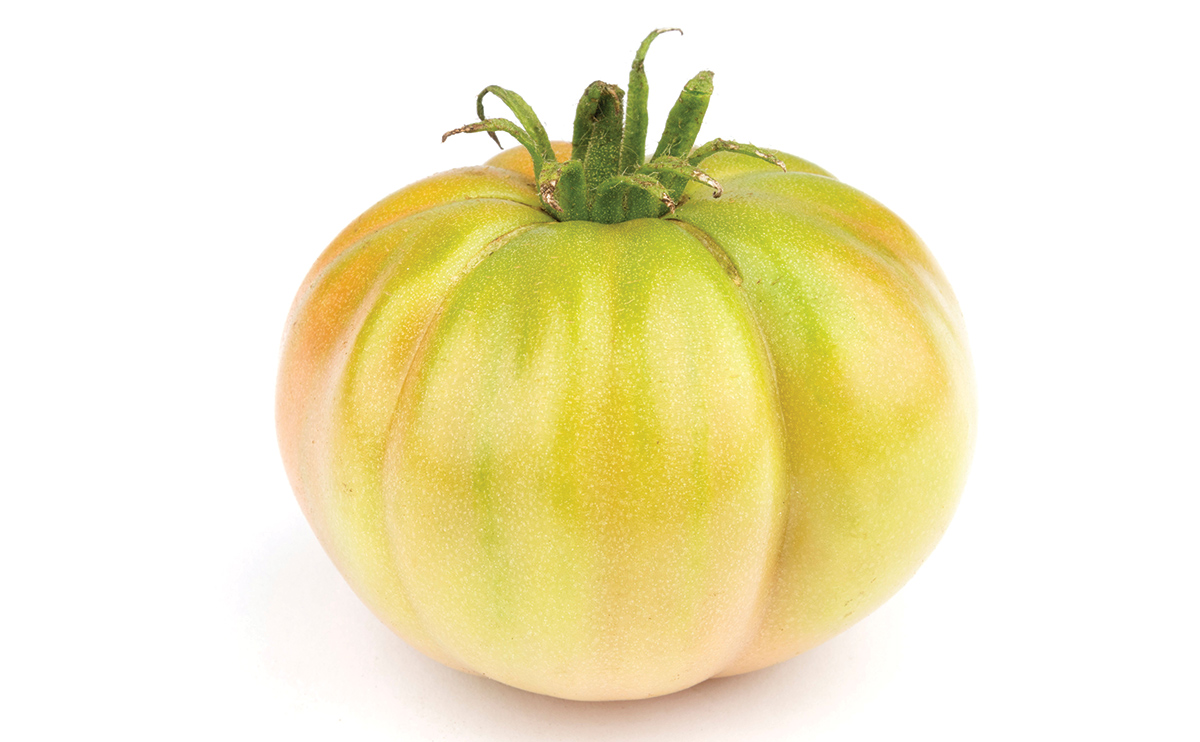There are few pleasures greater than biting into the season's first tomato - sweet juice dribbling down your chin, bursting with flavor.

Heirloom tomatoes, which crowd farmers’ market stands in late summer, can be ugly. They can be gnarled or smooth, and any number of wild colors. And, unlike modern tomatoes, which are bred for uniform flavor and high yields, they can be unpredictable – but the flavor payoff is huge.
With seeds that have been passed down for generations, heirlooms are the original tomatoes. In America, tomatoes weren’t well known until after the Civil War. (First as a health craze: “Tomato pills” were sold as a cure-all in the 1830s.) The popularity of this fruit (yes, fruit) cemented first with the rise of ketchup and then salsa.
When growing heirlooms, consider the length of your growing season; tomatoes need between 60 and 85 days. Take into account the amount of space you have – a huge garden plot or a container on your fire escape? Tomatoes don’t like being cramped. The more air and space you can provide, the better.
Tomatoes crave sun (ideally eight hours or more) and rich, well-composted soil. Experts advise not planting tomatoes in the same soil year after year, as it increases the risk of tomato blight.
There are few pleasures greater than biting into the season’s first tomato – sweet juice dribbling down your chin, bursting with flavor.
Tomato plants are vines, and have two basic ways of growing. The vines of determinate, or bush tomatoes, grow about 1 to 3 feet long. Once flowers form at the vine tips, the plant stops growing. This means determinate types set fruit over roughly a two-week period and then stop, which makes them an excellent choice for canning and rooftop or container growing.
An indeterminate tomato refers to plants that grow 6 to 20 feet long. They produce fruit throughout the season, until the first frost. Pruning is crucial, or they will put too much energy into vine production. Many believe that indeterminate tomatoes offer better flavor, but they need to be supported by a trellis or tomato cage.
Young tomato plants are delicate. When transplanting seedlings, transfer them to the garden (or container) on a cloudy day; hot sun can be stressful. Bury the tomato stems up to the first real leaves, and, as the plant grows, remove the suckers (the growths that appear between the stem and a branch) from non-fruiting branches. This helps concentrate the plant’s energy on the healthiest leaves and will yield more fruit later in the season.
Early heavy rains can be damaging, too – steady watering every few days is better than a daily soaking. And always try to water the soil, as opposed to the plant.
Weeding is crucial, as is feeding tomato plants with a rich compost throughout the growing season.
Harvest tomatoes when ripe – but not too ripe. If any tomatoes fall off the vine prematurely, let the fruit ripen on a south-facing windowsill. This is especially good for green tomatoes or late-season fruit at risk for frost.
There are few pleasures greater than biting into the season’s first tomato – sweet juice dribbling down your chin, bursting with flavor. Be sure to plant enough tomatoes to have extras for soups, sauces and canning. Next winter you’ll be happy to have a jar of your own tomatoes instead of rock-hard tasteless ones flown in from a hothouse across the country.
[mf_editorial_break layout=”twocol” title=”Tomato Gazpacho with Tomato-Vegetable Topping” subtitle=”Recipe”]
On a hot summer night gazpacho is a refreshing option. This soup was adapted from a recipe by Washington Post food editor Joe Yonan.
3 pounds heirloom tomatoes, such as Brandywine, Purple Cherokee or Black Krim, chopped
3 garlic cloves, chopped
1 cup stale bread cubes
12 large basil leaves
1 teaspoon kosher salt
Freshly ground black pepper
2 tablespoons apple cider vinegar 2 tablespoons extra-virgin olive oil 1 to 2 teaspoons honey
Garnishes:
2 medium cucumbers, peeled and cut into
1â„2-inch dice
12 cherry tomatoes, quartered
2 small tomatoes (preferably Green Zebra),
cut into 1â„2-inch pieces
1 green, red, yellow or purple sweet pepper, cut into 1â„2-inch pieces
Combine tomatoes, garlic, bread, basil, salt, pepper, vinegar, olive oil and honey in blender or food processor and blend until smooth and frothy, working in batches if necessary. Taste, and add more salt, pepper, vinegar and honey if needed. Refrigerate soup until thoroughly chilled, at least 2 hours. For the garnish, lightly season the cucumbers, cherry tomatoes, tomatoes and sweet peppers with salt and pepper. Serve the soup with a handful of the garnishes and a few torn basil leaves scattered on top, and drizzle with more olive oil. Serves 4 to 6.[/mf_editorial_break]